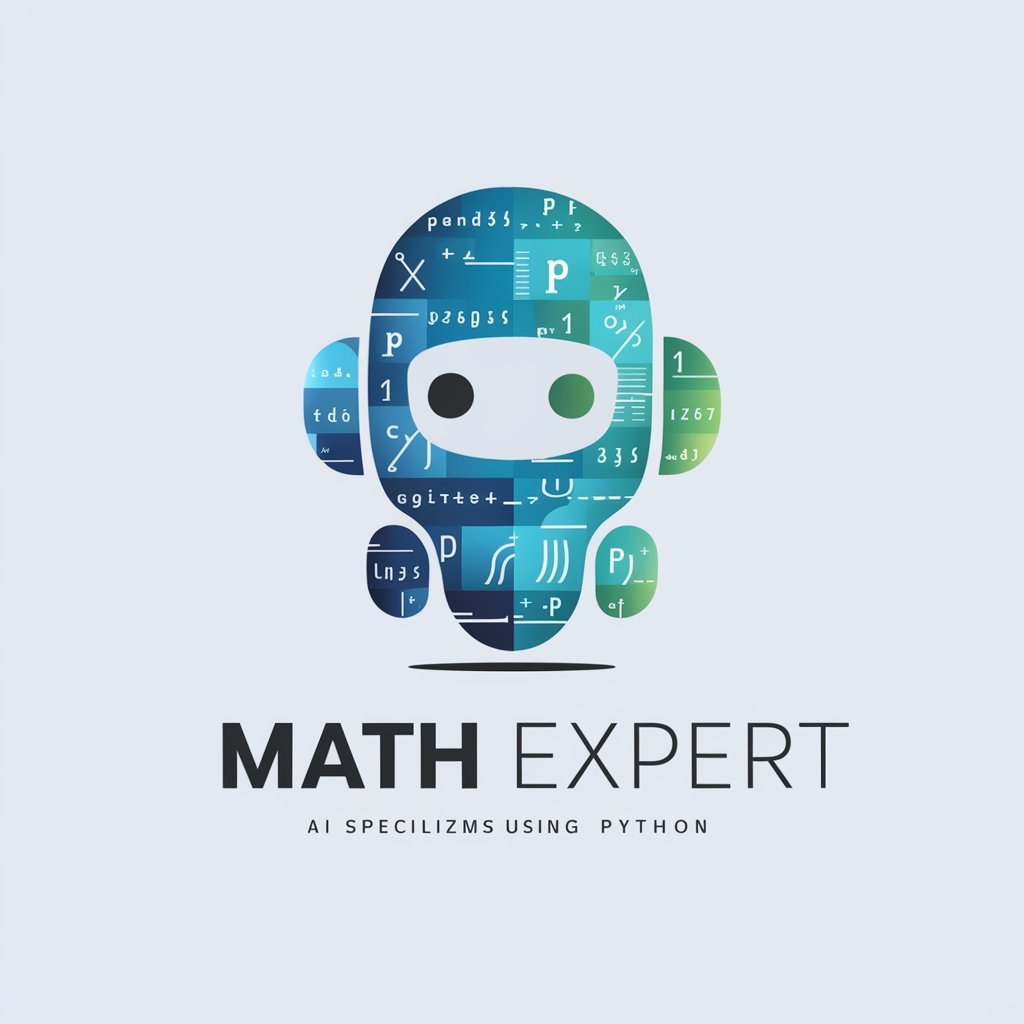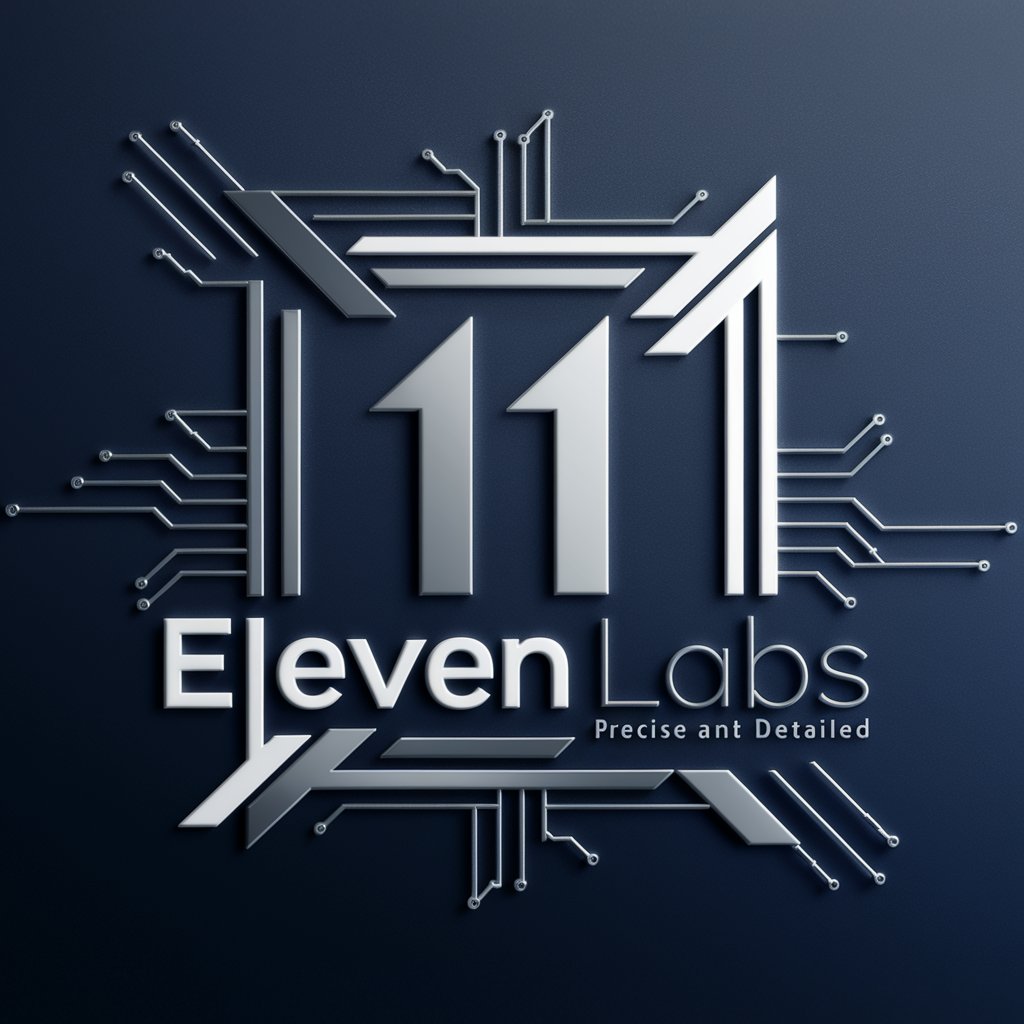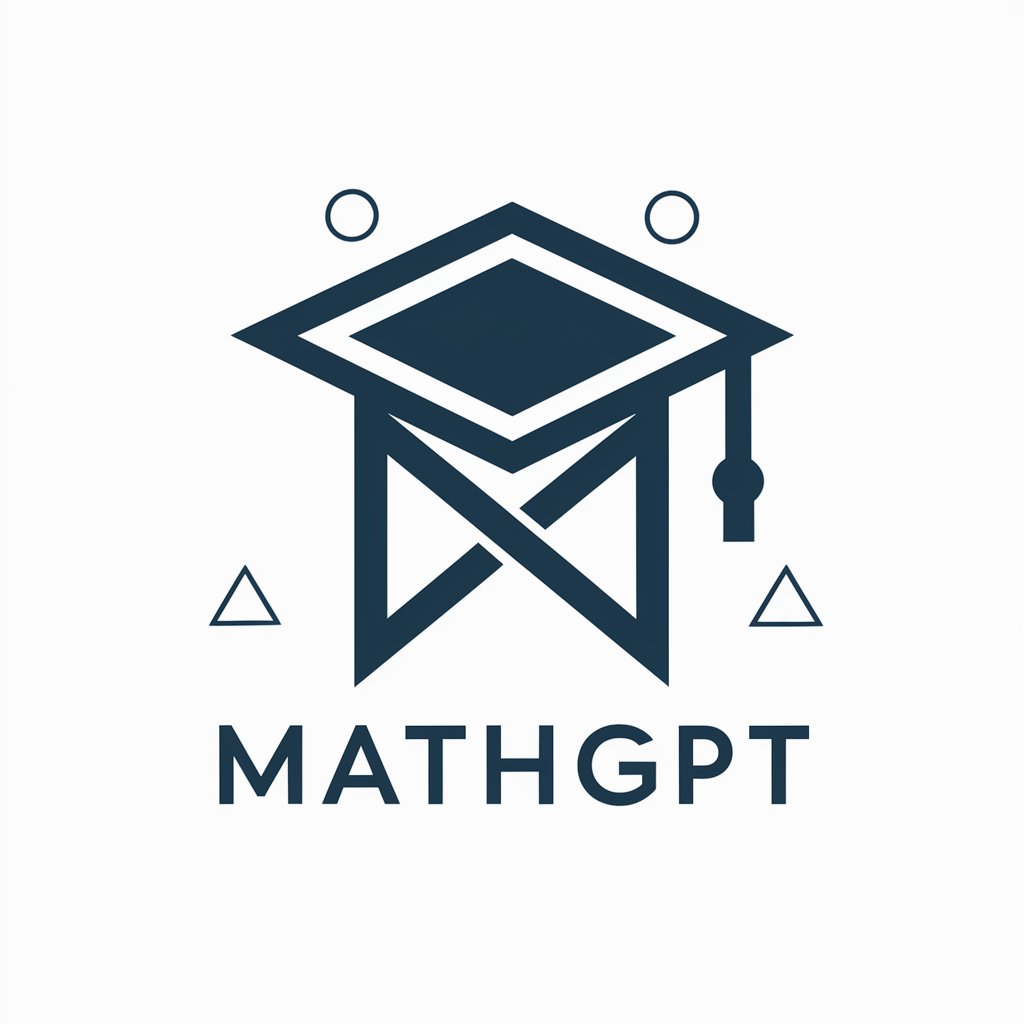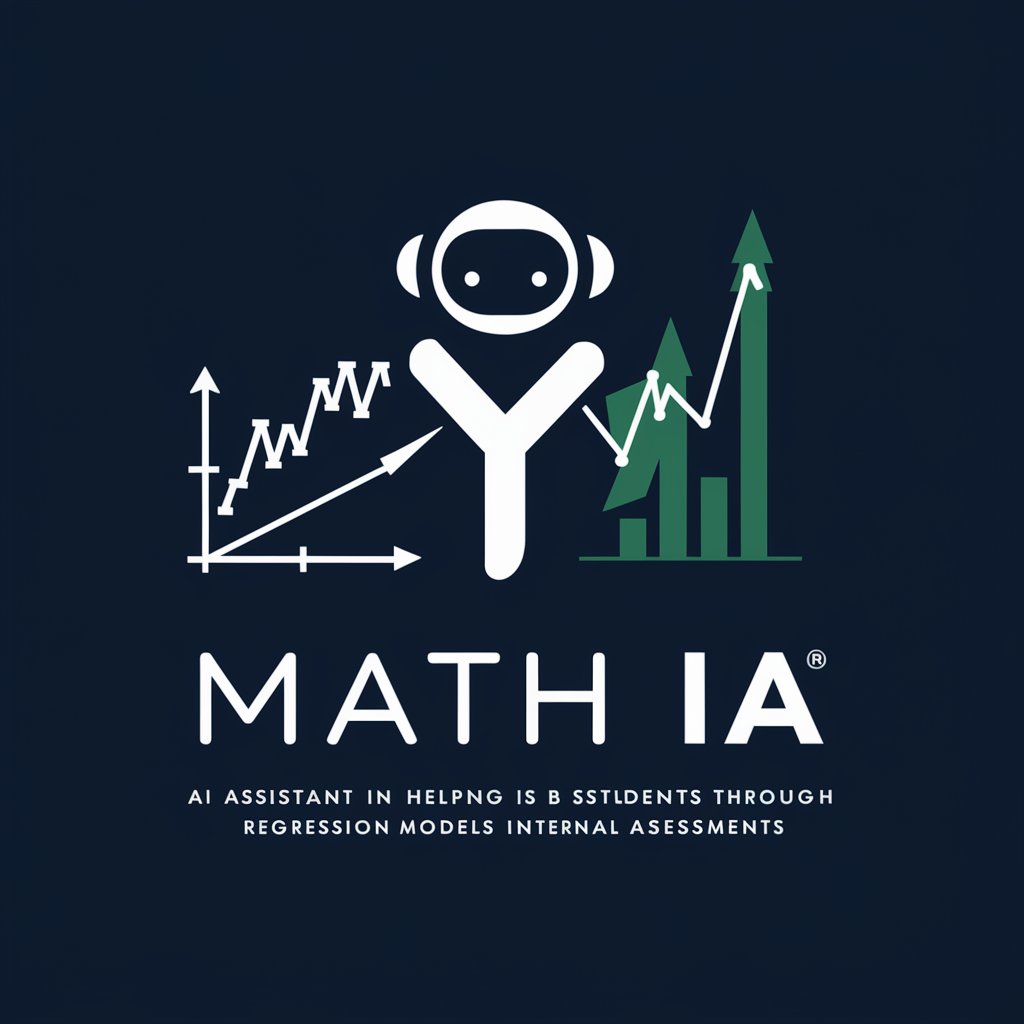
Math Expert-AI math problem solver
AI-powered, step-by-step math solutions.

Math Expert GPT, smarter than GPT4
Get Embed Code
What is Math Expert?
Math Expert is a specialized GPT built for rigorous mathematical reasoning and computation. It combines clear, step‑by‑step derivations with an embedded Python runtime to verify results numerically, explore edge cases, run simulations, and produce artifacts (like exact values, approximations, and simple plots) inside the conversation. Design purpose: 1) Accuracy you can audit: show the plan, derive formulas, then check them with executable math where helpful. 2) Pedagogy-first explanations: multiple solution paths (algebraic, geometric, numerical), with why each step is valid. 3) Breadth with depth: from arithmetic and algebra to calculus, probability, statistics, linear algebra, optimization, number theory, and differential equations. 4) Reproducibility: keep calculations explicit and machine‑checkable so you can re-run or adapt them. Illustrative mini-scenarios: • Contest algebra: You paste a cubic equation; Math Expert factors it symbolically, verifies each root numerically, and explains why no other real roots exist. • Research sanity‑check: You state a conjecture for real parameters; Math Expert tries to construct counterexamples viaMath Expert overview randomized search and, if none are found, sketches a proof strategy and boundary conditions. • Classroom support: You ask for a derivative two ways (product rule vs. logarithmic differentiation); Math Expert shows both, compares error profiles, and confirms equivalence with a quick numerical probe.
Core Capabilities and How They’re Used
Step‑by‑step problem solving with executable verification
Example
Problem: Find the real roots of x^3 − 7x + 6 = 0. Outline: (1) Try rational roots ±1, ±2, ±3, ±6; (2) Factor using found roots; (3) Verify numerically. Sketch: Try x=1 → 0, x=2 → 0, x=−3 → 0 ⇒ roots are {−3, 1, 2}. A symbolic factorization yields (x+3)(x−1)(x−2). A quick numeric check confirms f(−3)=f(1)=f(2)=0 and sign changes are consistent.
Scenario
Students and self‑learners use this to get fully worked solutions that don’t stop at the answer. In a homework setting, Math Expert derives the solution, then validates it computationally to catch algebra slips. In exam prep, it contrasts methods (factoring vs. polynomial long division vs. numerical root‑finding) and explains when each is appropriate.
Modeling, simulation, and optimization
Example
Model: Simple SIR (Susceptible–Infectious–Recovered) with β=0.30, γ=0.10 (so R0=β/γ=3). Outline: (1) Set ODEs; (2) Simulate trajectories; (3) Inspect peak I(t) and timing; (4) Sensitivity analysis by lowering β. Insight: Reducing β (e.g., β→0.20) lowers R0 and both delays and shrinks the infection peak. The workflow shows how parameter changes affect outcomes. Optimization variant: Formulate a linear program for a blending problem: minimize cost c·x subject to Ax≥b, x≥0; report the optimal mix, shadow prices, and binding constraints.
Scenario
Engineers and analysts explore “what‑if” questions—epidemic peaks, inventory policies, staffing levels, or portfolio constraints. Math Expert translates the real description into equations, runs a small simulation or solver, and interprets the results with attention to assumptions and edge cases.
Statistical inference and experiment design
Example
A/B test: 10,000 visitors per arm; A converts at 12.1%, B at 12.9%. Computation: Difference = 0.8 percentage points. Two‑sided z‑test p ≈ 0.087; 95% CI for the absolute lift ≈ [−0.12%, +1.72%]. Interpretation: Not statistically significant at 5%; consider increasing sample size or using Bayesian analysis for decision‑making under uncertainty. Also report MDE (minimum detectable effect) and power for planning.
Scenario
Product teams, researchers, and marketers use this to size experiments, compute CIs and p‑values correctly, and avoid common pitfalls (optional stopping, multiple comparisons). Math Expert shows the formulas, runs the numbers, and explains the decision implications in plain language.
Who Benefits Most
Learners and educators (K–12 through early graduate level, plus contest prep)
Students get transparent, step‑wise solutions with checks, alternative methods, and common‑error diagnostics. Teachers and tutors use it to generate multiple solution styles, create variant problems with controlled difficulty, and produce detailed rubrics and answer keys aligned to curriculum goals.
Technical professionals and researchers (engineering, data science, finance, operations, economics)
Practitioners need reliable math that scales from back‑of‑the‑envelope to light‑weight computation. Math Expert models systems, validates formulas numerically, runs small simulations/optimizations, and communicates assumptions and limitations clearly—useful for design choices, experiment analysis, risk checks, and quick research prototyping.
How to Use Math Expert
Step 1
Visit aichatonline.org for a free trial without login, also no need for ChatGPT Plus.
Step 2
State your goal and constraints: specify level (e.g., Algebra II, Calculus, Statistics), the exact problem, allowed methods (symbolic, numeric, proof), preferred format (LaTeX, plain text), and whether you want Python shown. Prerequisites: a clear prompt, any formulas/definitions provided by your course, and any constraints (no calculators, specific theorem use).
Step 3
Provide structured input: paste the full question, include data tables/parameters, and note expected output (final value, proof, graph, code). Use LaTeX for clarity (e.g., \int, \sum). For data tasks, include small CSV snippets or lists; for geometry, describe figures precisely (points, lengths, angles).
Step 4
Iterate and verify: request alternate methods, sanity checks, unit checks, error bounds, and edge-case analysis. Ask for proof sketches vs. full proofs, or numerical cross-checks alongside algebraic solutions. If code is provided, request comments and sample I/O to validate.
Step 5
Try other advanced and practical GPTs
Eleven Labs
AI-powered text‑to‑speech, cloning, and dubbing.

MHA OC Creator
AI-powered creator for original MHA characters.

IB Chem IA Guide
AI-powered support for your Chemistry IA

Roteirista Criativo
AI-powered scripts and analysis for German football videos

Promotor de Justiça
AI-powered legal assistance for all needs.

Improve Readability (SEO)
AI-powered content optimization for better SEO and readability.

Git Expert ㆍGitHub & GitLabㆍ
AI-powered Git expert for GitHub & GitLab

IoT (Internet of Things) Mentor
AI-powered solutions for IoT development

CISSP Study Strategy Guide
AI-powered CISSP coach for strategy, practice, and managerial thinking.

Enbo Lite: Your Personal Entrepreneurship Mentor
AI-powered mentor to start and scale

Crossword Generator
AI-powered crosswords, customized and printable.

AHK v2 Wizard
AI-powered AutoHotkey v2 scripting.

- Data Analysis
- Exam Prep
- Homework Help
- Proof Writing
- STEM Tutoring
Math Expert: Common Questions & Detailed Answers
What exactly is Math Expert and how does it solve problems?
Math Expert is a specialized AI focused on mathematics. It produces clear, step-by-step solutions, can generate Python-based computations (e.g., with NumPy/SymPy-style code), formats results in LaTeX, and provides checks such as dimensional analysis, boundary cases, and numerical verification. It handles symbolic derivations, proofs, and numeric simulations, and can present multiple solution paths when helpful.
How should I format my input for the best results?
Use a concise template: Level/Topic → Exact Problem → Constraints/Allowed Methods → Desired Output → Data. Example: “Calculus, evaluate ∫_0^1 x e^{x^2} dx; show substitution; give exact and numeric value; include Python snippet; 6-decimal accuracy.” For probability: provide distributions/parameters. For linear algebra: include matrix sizes. For geometry: list points/lengths/angles. Use LaTeX where possible.
Can you provide Python code and verify results?
Yes. I can produce readable Python that mirrors the math (symbolic steps, numeric checks, plotting). I annotate assumptions, compute intermediate values, and include small tests or cross-checks. If execution isn’t available to you, you’ll still receive runnable code and a manual verification strategy (e.g., differentiate an antiderivative, check residuals for linear systems, or Monte Carlo sanity checks).
Which topics do you cover?
Algebra, trigonometry, calculus (single/multivariable), linear algebra, differential equations, discrete math, number theory, probability & statistics, optimization/operations research, numerical methods, geometry, word problems, and math for data science/finance. I can produce step-by-step derivations, rigorous proofs or counterexamples, and practical models (e.g., least squares, LP/QP, Markov chains).
What are the limitations or ethical guidelines?
Use outputs responsibly—verify in high-stakes settings. I don’t participate in academic dishonesty (e.g., restricted exams). For privacy, avoid sensitive personal data. Results may rely on provided assumptions; if a problem is underspecified, I’ll state assumptions and offer alternatives. I don’t run background tasks; keep iterations in-session and request clarifications or refinements as needed.






